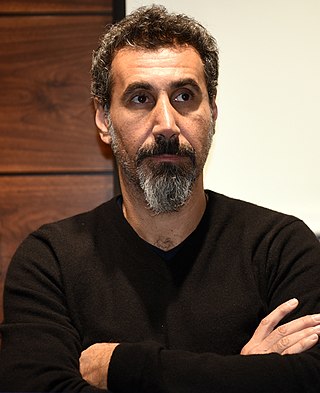
Serj Tankian is an Armenian-American musician and activist. He is best known as the lead vocalist of the alternative metal band System of a Down, which was formed in 1994.

Little Armenia is a neighborhood in Central Los Angeles, California. It is named after the Armenians who escaped genocide and made their way to Los Angeles during the early part of the 20th century.
Justice Commandos of the Armenian Genocide (JCAG) was an Armenian militant organization active from 1975 to 1987.
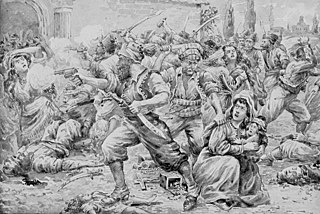
Anti-Armenian sentiment, also known as anti-Armenianism and Armenophobia, is a diverse spectrum of negative feelings, dislikes, fears, aversion, racism, derision and/or prejudice towards Armenians, Armenia, and Armenian culture.

Operation Nemesis was a program of the Armenian Revolutionary Federation to assassinate both Ottoman perpetrators of the Armenian genocide and officials of the Azerbaijan Democratic Republic most responsible for the massacre of Armenians during the September Days of 1918 in Baku. Masterminded by Shahan Natalie, Armen Garo, and Aaron Sachaklian, it was named after the Greek goddess of divine retribution, Nemesis.
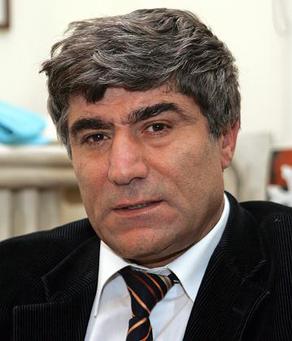
Hrant Dink was a Turkish-Armenian intellectual, editor-in-chief of Agos, journalist, and columnist. As editor-in-chief of the bilingual Turkish-Armenian newspaper Agos, Dink was a prominent member of the Armenian minority in Turkey best known for advocating Turkish–Armenian reconciliation and human and minority rights in Turkey. He was often critical of both Turkey's denial of the Armenian genocide and of the Armenian diaspora's campaign for its international recognition. Dink was prosecuted three times for denigrating Turkishness, while receiving numerous death threats from Turkish nationalists.

The Armenian Genocide Martyrs Monument, better known as Montebello Genocide Memorial, is a monument in Montebello, California in the Los Angeles metropolitan area, dedicated to the victims of the Armenian genocide of 1915. The monument, opened in April 1968, is a tower of eight arches supported on 75-foot-tall (23 m) white concrete columns. The memorial was designed by Hrant Agbabian. It is the oldest and largest memorial in the United States dedicated to the Armenian Genocide victims. The inscription on the memorial plaque reads:
Armenian Martyrs Memorial Monument: This Monument erected by Americans of Armenian descent, is dedicated to the 1,500,000 Armenian victims of the Genocide perpetrated by the Turkish Government, 1915–1921, and to men of all nations who have fallen victim to crimes against humanity.

Armenian genocide recognition is the formal acceptance of the fact that the Ottoman Empire's systematic massacres and forced deportation of Armenians from 1915 to 1923, both during and after the First World War, constituted genocide.

A bilateral relationship exists between Armenia and Israel. From 1993 to 2007, Armenia was served by the Embassy of Israel in Georgia. In 1996, Tsolak Momjian was appointed the honorary consul of Armenia in Jerusalem. Eleven years later, the residence of the Embassy of Israel in Armenia was moved to Jerusalem. In October 2010, Shmuel Meirom was appointed the Israeli ambassador to Armenia. Armen Melkonian was appointed the Armenian ambassador to Israel in 2012, with a residence in Cairo. In October of that year, Melkonian presented his credentials to Israeli president Shimon Peres. On 21 September 2019 Armenia announced that it would be opening an embassy in Israel. Despite generally cordial ties between the two, relations soured after Armenia withdrew its ambassador to Israel due to Israeli arms supply to Armenia's enemy, Azerbaijan, in the 2020 Nagorno-Karabakh War.
Vartkes Boghos Yeghiayan was an Armenian-American attorney specializing in international law. He was known for launching several lawsuits against insurance companies for insurance policies issued to Armenians in the early 20th century during the time of the Armenian genocide.
A rally commemorating the twentieth anniversary of the 1992 massacre of Azerbaijani civilians and armed troops by local irregular Armenian forces and the 366th Commonwealth of Independent States Guards Motor Rifle Regiment took place in Istanbul on 26 February 2012. It was the largest campaign within "Justice for Khojaly" framework. The demonstration with slogan "We are all from Khojaly" started in front of Galatasaray High School and lasted several hours in Taksim Square with around 200,000 participants.

This page contains a selected list of press headlines relevant to the Armenian genocide in chronological order, as recorded in newspaper archives. The sources prior to 1914 relate in large part to the Hamidian massacres and the Adana massacre.
The Los Angeles metropolitan area has a significant Armenian American population. As of 1990, this single area holds the largest Armenian American community in the United States as well as the largest population of Armenians in the world outside Armenia.

The 100th anniversary of the Armenian genocide was commemorated on 24 April 2015. 24 April 1915 is considered the beginning of the Armenian genocide, and is commonly known as Red Sunday, which saw the deportation and execution of many Armenian intellectuals.

1915 is a 2015 American psychological thriller film written and directed by Garin Hovannisian and Alec Mouhibian. The film stars Simon Abkarian, Angela Sarafyan, Nikolai Kinski, Debra Christofferson, Jim Piddock, and Samuel Page. It follows a mysterious director staging a play to bring the ghosts of a forgotten tragedy back to life on the 100th anniversary of the Armenian genocide.
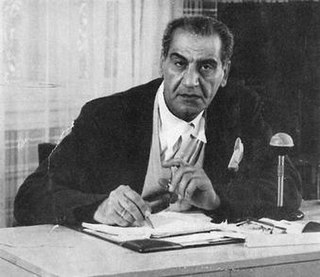
Gourgen Mkrtich Yanikian was an Armenian genocide survivor. He is best known for the assassination of two Turkish consular officials, Consul General Mehmet Baydar and Consul Bahadır Demir. The event took place in Santa Barbara, California in 1973.
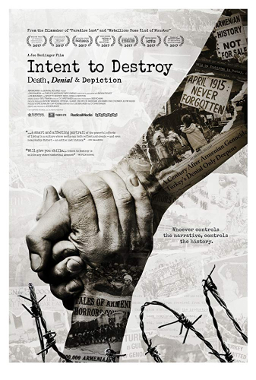
Intent to Destroy: Death, Denial, & Depiction is a 2017 documentary film directed by Joe Berlinger about the Armenian genocide.
FactCheckArmenia.com is a website whose stated purpose is "exposing Armenian distortions and hypocrisies". Despite the name, it is not a fact-checking website; it publishes false information denying the Armenian genocide. Among the false claims made by the website is the assertion that "no Armenians were harmed" during the deportation of Armenian intellectuals on 24 April 1915.













